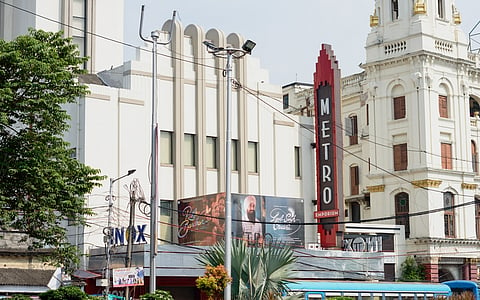
- Destinations
- Experiences
- Stay
- What's new
- Celebrating People
- Responsible Tourism
- CampaignsCampaigns
- SubscribeSubscribe
- Buy Now

Kolkata is famous for its rich heritage of beautiful buildings that still stand to this day. It is perhaps the only metropolitan city in India that has managed to preserve its architectural past. Walking along any street in South or North Kolkata, one can witness numerous houses with retro designs and elements that have yet to be demolished for real estate purposes. Some of the most notable residences in South Kolkata follow the unique Art Deco style. Several initiatives have tried to showcase the architecture of Kolkata. For instance, Calcutta Art Deco and Calcutta Houses, a tableaux of photographs and illustrations. Then there is Calcutta Architectural Legacies which was set up by author Amit Chaudhuri as a movement to preserve the ordinary Bengali homes in South Kolkata. As he points out in C.A.L., many of these houses have Art Deco elements in common, such as “semi-circular balconies; a long, vertical strip comprising glass panes for the stairwell; porthole-shaped windows; and the famous sunrise motif on grilles and gates”.
Head out to Dharmatala in central Kolkata and visit the Art Deco-style Metro cinema located on the busy Chowringhee road. This cinema played an important role in defining the city's cultural identity. During that time, Kolkata was famous for its live jazz evenings on Park Street, Raj-era club parties, and more. Metro cinema was opened in 1935, about a decade before India's independence. It was designed by Thomas W. Lamb, a well-known Scottish-American architect who was recognized for creating spectacular "movie palaces" in the United States. The American film studio Metro Goldwyn Mayer (MGM) launched Metro theatre in Calcutta to promote their films. Kolkata was one of the most significant cities in the British Empire at the time, with a large elite English-speaking community that included the British, Jews, and Armenians. Today it is a cinema hall and mall.
Address: Jawaharlal Nehru Rd, Esplanade, Dharmatala, Taltala, Kolkata, West Bengal 700072
Hindustan Building, located on Central Avenue, once served as the offices of the US Army. Situated in the heart of the city, it was the primary hub for all military operations. The building housed a post office, finance office, Base Section offices, air and rail booking offices, a radio station, a large post exchange, officers' mess, living quarters, signal offices, and several other facilities. The structure still stands today and is a registered office of Life Insurance Corporation.
Address Central Ave, Esplanade, Chandni Chawk, Bowbazar, Kolkata, West Bengal 700072
Victoria House stands as an example of the architectural brilliance of the 1930s. It was built during a time of great innovation, just before the onset of the Great Depression. This iconic structure is located on Chittaranjan Avenue and has served as the headquarters of the Calcutta Electric Supply Corporation (CESC) for many years. The building's grand facade, with its intricate design and imposing presence, is a testament to the vision and skill of the architects from that era.
During the 1950s and '60s, numerous residential buildings in the city embodied the glamour of Art Deco design, inspired by the iconic Metro cinema and its majestic facade. The term "Metro-bari", which literally translates to "Metro House", gained widespread usage in reference to the Art Deco style houses that were built in the city. The Art Deco style, characterised by its sleek and modern lines, was particularly well-suited to the urban environment, and the Metro-bari houses became a symbol of the city's architectural heritage. To experience the Art Deco elegance of Bengali homes of that era, walk around the South Kolkata neighborhoods of Southern Avenue, Jodhpur Park, Lake Gardens, Dover Lane, South End Park, Lake Terrace, Keyatala, Purna Das Road, and more. And keep tabs on Instagram pages such as Calcutta Houses which showcase the timeless beauty of these buildings. City-based walking tour outfits like Immersive Trails also highlight Art Deco in Kolkata on their walks.
